Integrating Data Leadership into Corporate Governance
In today’s data-driven world, the ability to harness data effectively has become a cornerstone of corporate success. Data now influences every aspect of decision-making, from strategic planning to operational efficiency. Yet, many organizations struggle to align their data strategies with broader governance frameworks. This is where data leadership plays a pivotal role. By embedding strong data leadership into corporate governance, you can ensure that data becomes a trusted asset, driving ethical, informed, and impactful decisions across your organization.
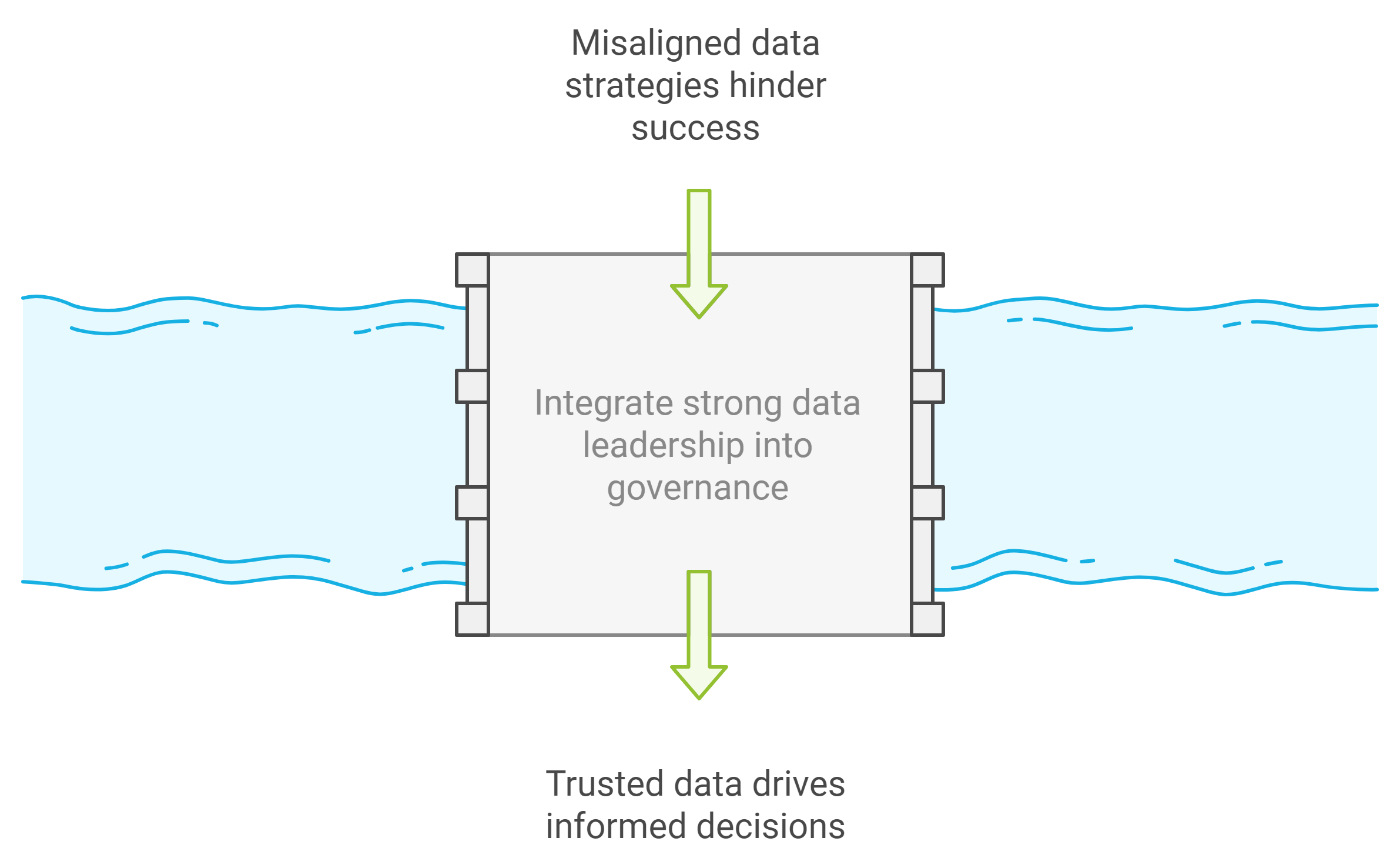
Key Takeaways
Data leadership is essential for transforming data into a strategic asset that drives informed decision-making across your organization.
Establishing a robust data governance framework enhances data accuracy, security, and accessibility, which are crucial for effective corporate governance.
Fostering a culture of data-driven decision-making empowers employees to utilize data insights, leading to improved strategic outcomes.
Clear roles and responsibilities within data governance structures prevent confusion and enhance collaboration among teams.
Balancing data privacy and accessibility is vital; implement policies that protect sensitive information while enabling secure data sharing.
Investing in training for data leaders equips them with the skills needed to navigate challenges and drive data initiatives aligned with corporate goals.
Successful integration of data leadership can lead to significant improvements in risk management, compliance, and overall organizational performance.
Understanding Data Leadership and Its Role in Modern Organizations
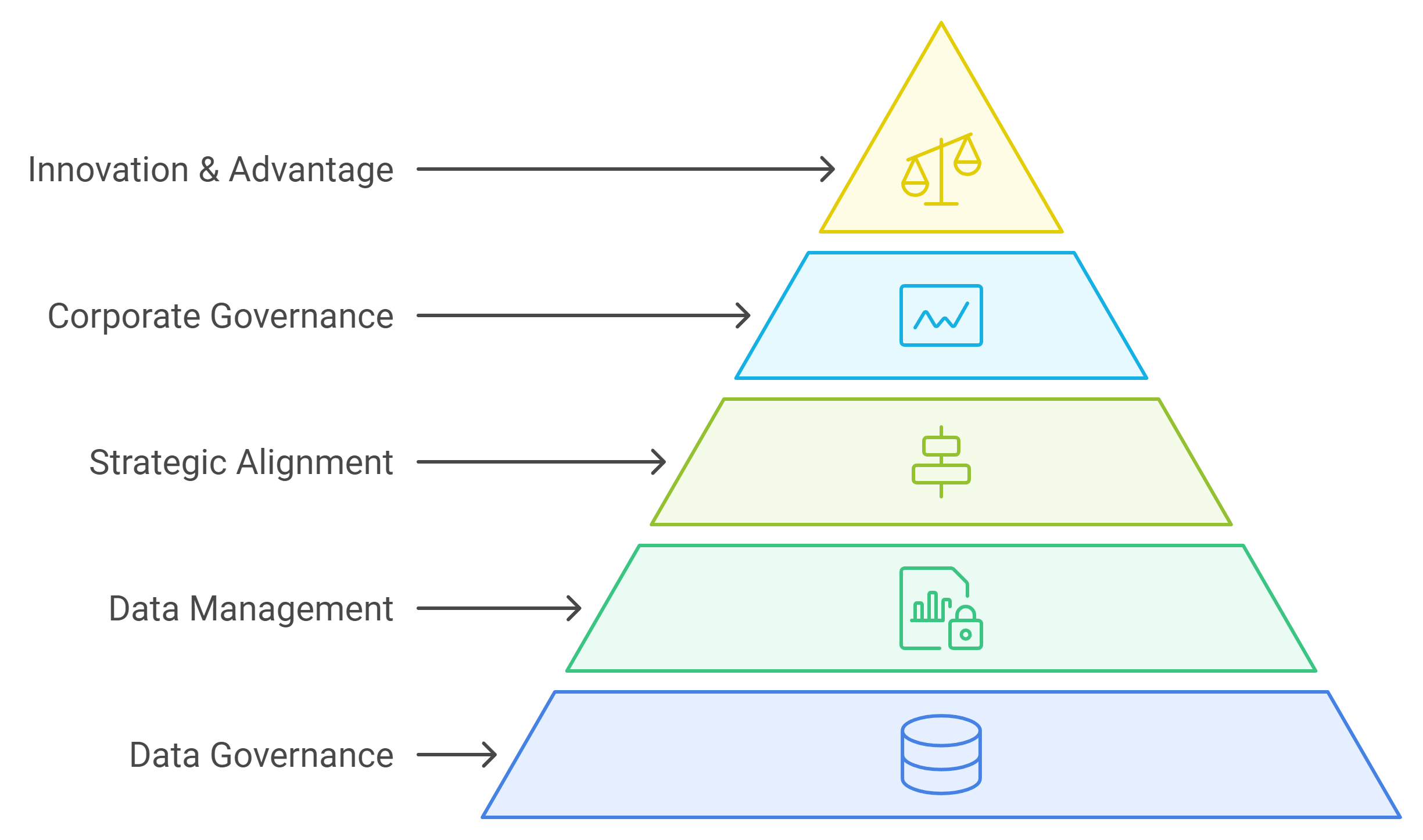
Defining Data Leadership
Data leadership represents the ability to guide an organization in leveraging data as a strategic asset. It involves setting a vision for how data can drive business outcomes and ensuring that teams align their efforts with this vision. As a data leader, you must foster a culture where data is not just collected but actively used to inform decisions. This requires a deep understanding of data governance, which establishes the policies and practices for managing data effectively. By prioritizing data management, you ensure that data remains accurate, secure, and accessible, enabling your organization to make informed decisions.
Effective data leadership also emphasizes collaboration. You must bridge the gap between technical teams and business leaders, ensuring that data initiatives align with organizational goals. This approach transforms data from a technical resource into a cornerstone of corporate strategy.
The Evolution of Data Leadership in the Corporate Landscape
The role of data leadership has evolved significantly over the past decade. Initially, organizations viewed data as a byproduct of operations, managed primarily by IT departments. Today, data has become a critical driver of business success. Modern data leaders recognize the importance of data governance as a foundation for achieving operational excellence and maintaining ethical standards.
This shift has also redefined the responsibilities of data leaders. You are no longer just a custodian of data but a strategic partner who influences key decisions. By modeling and measuring the impact of data on business performance, you demonstrate its value to stakeholders. This evolution underscores the need for organizations to invest in data management frameworks that align with corporate objectives.
Why Data Leadership Matters for Corporate Governance
Integrating data leadership into corporate governance ensures that data becomes a trusted asset across your organization. Strong data governance frameworks help you establish clear policies for data usage, quality, and security. These frameworks not only support compliance with regulations but also enhance decision-making processes.
Data leadership plays a crucial role in bridging the gap between data governance and corporate governance. By aligning data initiatives with business strategies, you ensure that data drives meaningful outcomes. This alignment fosters a culture of accountability and transparency, which are essential for effective governance.
The importance of data governance extends beyond compliance. It enables you to unlock the full potential of your data, driving innovation and competitive advantage. As a data leader, your ability to integrate data governance into corporate governance frameworks positions your organization for long-term success.
Key Roles and Responsibilities of Data Leaders
The Role of the Chief Data Officer (CDO)
The Chief Data Officer (CDO) serves as the cornerstone of effective data management within an organization. As a CDO, you hold the responsibility of transforming raw data into a strategic asset that drives business outcomes. Your role extends beyond technical oversight, requiring you to lead initiatives that align data strategies with organizational goals.
You must establish and coordinate a robust data governance framework. This framework ensures that data policies meet business needs while complying with legal and regulatory standards. By setting the strategic direction for data governance initiatives, you create a foundation for ethical and efficient data usage. Additionally, you act as a bridge between departments, fostering collaboration across IT, cybersecurity, marketing, and finance to ensure that data strategies address the organization’s diverse needs.
Your leadership also involves championing data literacy. By investing in employee training, you empower teams to understand and utilize data effectively. This effort enhances decision-making capabilities across all levels of the organization. Furthermore, you must uphold data ethics by ensuring that data collection and usage remain compliant and transparent. Regular audits of data quality and security standards help you identify areas for improvement, reinforcing trust in your organization’s data practices.
Responsibilities of Data Leaders in Governance
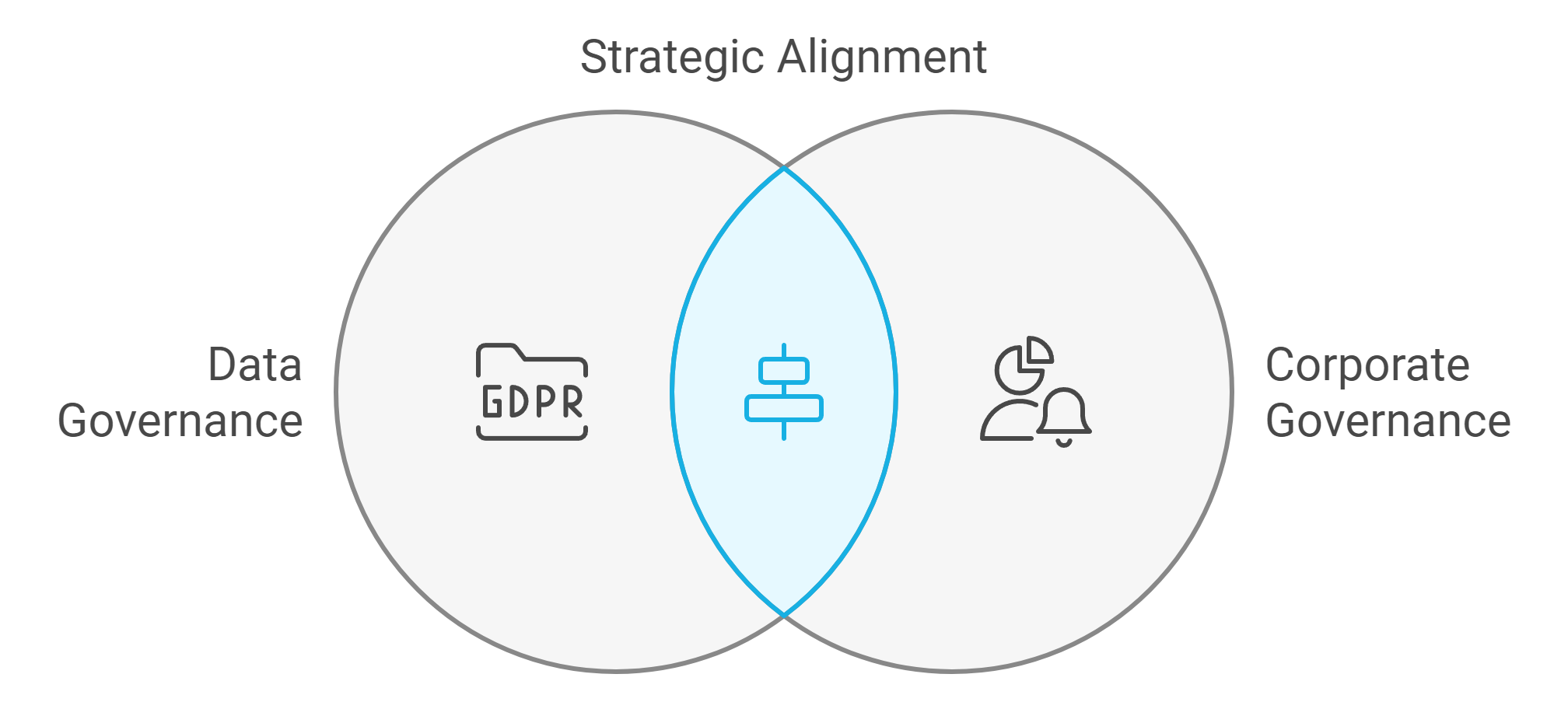
As a data leader, your responsibilities in governance extend to creating a culture of accountability and transparency. You must define clear roles and responsibilities within the data governance council, ensuring that every stakeholder understands their part in managing data effectively. This council serves as a guiding body, helping you oversee the implementation of governance policies and practices.
Your role also involves prioritizing data management processes that align with corporate governance objectives. This includes setting quality standards, monitoring compliance, and ensuring data accessibility. By doing so, you enable your organization to make informed decisions based on reliable and secure data.
Another critical responsibility is driving the integration of data governance roles into broader corporate governance structures. You must ensure that data initiatives support strategic goals while adhering to ethical standards. This alignment not only enhances operational efficiency but also strengthens your organization’s ability to navigate regulatory challenges.
How Data Leaders Drive Strategic Decision-Making
Data leaders play a pivotal role in shaping strategic decision-making. By leveraging data insights, you provide executives with actionable intelligence that informs business strategies. Your ability to analyze trends and forecast market opportunities positions your organization to stay ahead of competitors.
You must also focus on aligning data initiatives with key business objectives. This involves identifying areas where data can add value, such as improving customer experiences or optimizing operational processes. By demonstrating the impact of data-driven decisions, you build trust among stakeholders and reinforce the importance of data leadership.
Collaboration remains a cornerstone of your efforts. By working closely with other leaders, you ensure that data strategies address the organization’s overarching goals. This collaborative approach transforms data from a technical resource into a strategic tool that drives innovation and growth.
The Intersection of Data Governance and Corporate Governance
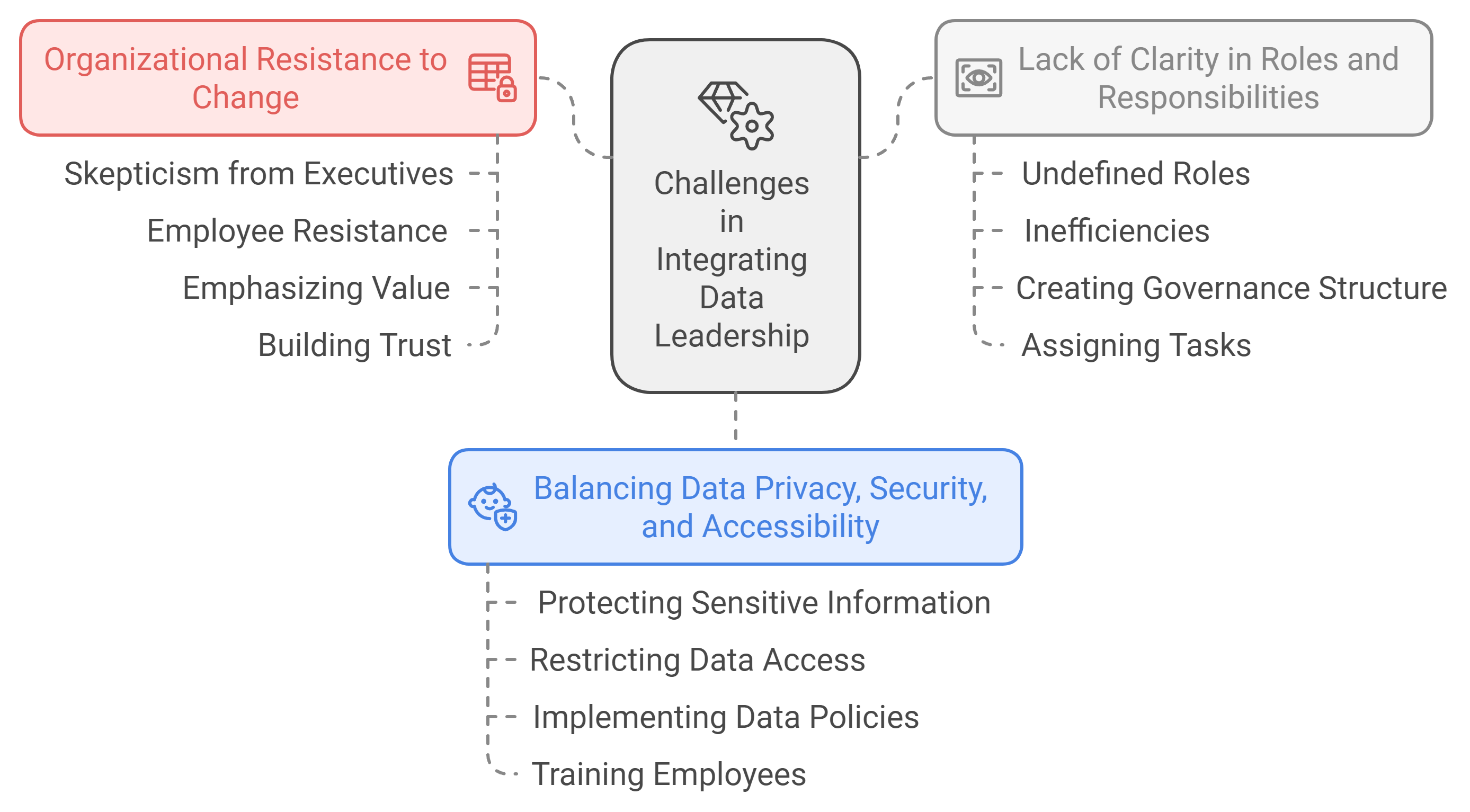
Defining Data Governance and Its Core Principles
Data governance refers to the framework that ensures your organization manages its data effectively. It establishes clear rules and responsibilities for handling data, ensuring accuracy, security, and accessibility. At its core, data governance focuses on creating policies that guide how data is collected, stored, and used. These policies help you maintain consistency and reliability in your data assets.
Core principles of data governance include accountability, transparency, and compliance. Accountability ensures that every stakeholder understands their role in managing data. Transparency promotes open communication about data usage and decision-making processes. Compliance ensures that your organization adheres to legal and regulatory standards. By following these principles, you create a foundation for ethical and efficient data management.
Master data governance plays a critical role in unifying data across your organization. It ensures that key data elements, such as customer or product information, remain consistent and accurate. This consistency supports better decision-making and enhances trust in your data systems. Effective data governance practices also involve regular audits and updates to ensure that your policies remain relevant and effective.
How Data Governance Supports Corporate Governance Goals
Data governance directly supports your corporate governance goals by aligning data strategies with organizational objectives. Strong data governance policies ensure that your data remains a reliable resource for decision-making. These policies help you establish clear guidelines for data usage, reducing risks and enhancing operational efficiency.
Corporate governance focuses on accountability, transparency, and ethical decision-making. Data governance complements these goals by providing the tools and frameworks needed to manage data responsibly. For example, implementing robust data governance practices ensures that your organization complies with regulations, such as data privacy laws. This compliance not only reduces legal risks but also strengthens your reputation with stakeholders.
Master data governance further enhances corporate governance by ensuring consistency in critical data sets. Consistent data enables you to make informed decisions that align with your strategic goals. Additionally, data governance practices improve risk management by identifying potential vulnerabilities in your data systems. By addressing these vulnerabilities, you enhance your organization's ability to navigate challenges and seize opportunities.
Data governance and management work together to support corporate governance. While data governance focuses on policies and frameworks, data management involves the day-to-day handling of data. Together, they ensure that your organization maximizes the value of its data assets while maintaining ethical standards.
The Role of Data Leadership in Bridging the Two
Data leadership serves as the bridge between data governance and corporate governance. As a data leader, you play a crucial role in aligning data initiatives with organizational goals. Your ability to communicate the value of data governance to executives ensures that it becomes an integral part of corporate strategy.
You must lead the data governance implementation process by establishing clear roles and responsibilities. This involves creating a governance council that oversees the development and execution of data governance policies. By fostering collaboration among stakeholders, you ensure that data governance aligns with corporate objectives.
Master data governance requires your active involvement to maintain consistency and accuracy in critical data sets. You must prioritize initiatives that enhance data quality and security. Regular training sessions can help your team understand the importance of data governance and its impact on corporate governance.
Your leadership also involves promoting a culture of accountability and transparency. By demonstrating the benefits of strong data governance practices, you encourage stakeholders to adopt these practices across the organization. This cultural shift ensures that data governance and data management become integral to your corporate governance framework.
Challenges in Integrating Data Leadership into Corporate Governance
Organizational Resistance to Change
Resistance to change often emerges as a significant hurdle when integrating data leadership into corporate governance. Many organizations operate within established frameworks, where traditional decision-making processes dominate. Introducing data leadership disrupts these norms, leading to hesitation among stakeholders. You may encounter skepticism from executives who view data initiatives as costly or unnecessary. Employees may also resist adopting new practices, fearing that automation or data-driven strategies could replace their roles.
To overcome this resistance, you must emphasize the value of data leadership. Highlight how it enhances decision-making and aligns with corporate goals. Engage stakeholders early in the process to address concerns and build trust. By fostering a culture of collaboration, you can demonstrate that data leadership complements existing structures rather than replacing them. This approach ensures smoother transitions and greater acceptance across all levels of the organization.
Lack of Clarity in Roles and Responsibilities
Unclear roles and responsibilities create confusion during the integration of data leadership into governance frameworks. Without defined boundaries, teams may struggle to understand their contributions to data governance. This lack of clarity often leads to inefficiencies, duplication of efforts, or gaps in critical areas like data privacy and security.
You must establish a clear governance structure to address this challenge. Define specific roles for data leaders, such as Chief Data Officers, and outline their responsibilities in managing data governance. Create a governance council to oversee the implementation of policies and ensure accountability. By assigning tasks and setting expectations, you enable teams to work cohesively toward shared objectives. This clarity not only streamlines operations but also strengthens your organization's overall data management practices.
Balancing Data Privacy, Security, and Accessibility
Balancing data privacy and security with accessibility remains one of the most complex challenges in modern organizations. On one hand, you must protect sensitive information to comply with regulations and maintain stakeholder trust. On the other hand, restricting access to data can hinder innovation and decision-making. Striking this balance requires a strategic approach.
Start by implementing robust data governance policies that prioritize both data privacy and security. These policies should outline how data is collected, stored, and accessed while ensuring compliance with legal standards. Regular audits can help identify vulnerabilities and improve your data security measures. At the same time, invest in technologies that enable secure data sharing without compromising accessibility. For example, role-based access controls allow you to grant permissions based on individual responsibilities, ensuring that only authorized personnel can access sensitive data.
Promoting a culture of accountability further supports this balance. Train employees on the importance of data privacy and security, and encourage them to follow best practices. By fostering awareness and responsibility, you can create an environment where data remains both protected and accessible. This approach not only mitigates risks but also enhances your organization's ability to leverage data effectively.
Solutions for Overcoming Integration Challenges
Building a Culture of Data-Driven Decision-Making
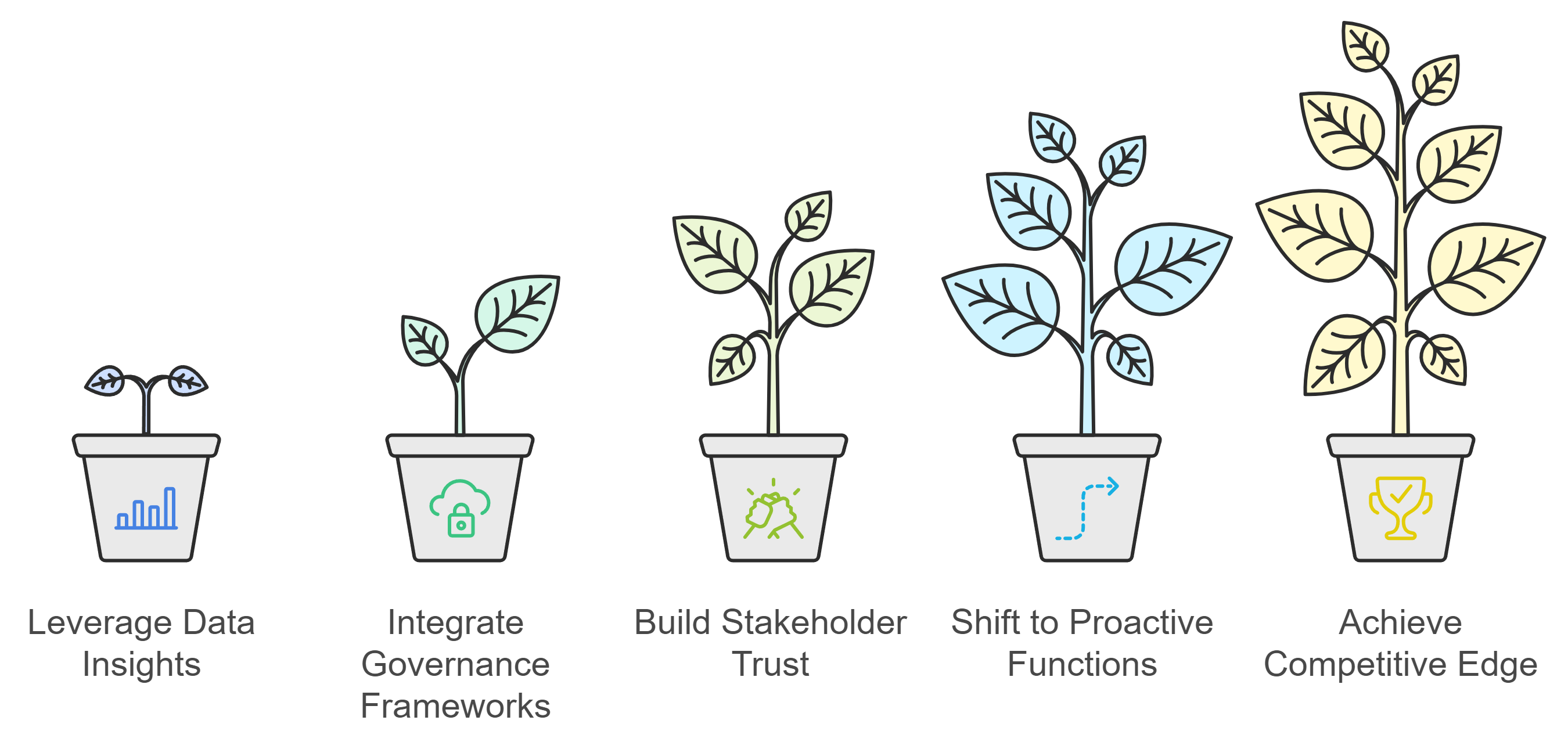
Creating a culture where data drives decisions is essential for overcoming integration challenges. You must start by fostering an environment where data becomes a trusted resource for every team. Encourage employees to rely on data insights rather than intuition when making decisions. This shift requires consistent communication about the value of data in achieving organizational goals.
Organizations with strong data-driven cultures report significant improvements in decision-making quality and strategic outcomes. By promoting data literacy across all levels, you empower employees to interpret and use data effectively. Training sessions, workshops, and accessible resources can help your teams build confidence in working with data. When employees understand how to leverage data, they contribute to better-informed decisions that align with corporate objectives.
To reinforce this culture, celebrate successes achieved through data-driven strategies. Highlight examples where data insights led to improved customer service, increased revenue, or innovative solutions. These stories demonstrate the tangible benefits of embracing data and motivate others to follow suit. A strong data-driven culture ensures that decisions are grounded in evidence, enhancing both efficiency and accountability.
Establishing Clear Governance Frameworks
A clear data governance framework is the backbone of successful integration. You need to define policies and procedures that guide how data is collected, stored, and used. This framework ensures consistency, reliability, and security in your data assets. Without it, teams may struggle with inefficiencies or compliance risks.
Start by outlining the roles and responsibilities of key stakeholders. Assign specific tasks to data leaders, such as overseeing data governance initiatives or ensuring compliance with regulations. Establish a governance council to monitor the implementation of policies and address challenges as they arise. This structure creates accountability and ensures that everyone understands their role in managing data effectively.
Data-driven organizations with robust governance frameworks are three times more likely to report improvements in decision-making. By aligning your data governance framework with corporate goals, you create a foundation for ethical and efficient data management. Regular audits and updates to the framework help maintain its relevance and effectiveness. This proactive approach minimizes risks and maximizes the value of your data.
Investing in Training and Development for Data Leaders
Equipping data leaders with the right skills is crucial for overcoming integration challenges. You must invest in training programs that enhance their expertise in data governance and management. These programs should focus on both technical skills and leadership capabilities, enabling data leaders to guide their teams effectively.
Training initiatives should cover topics like data governance frameworks, compliance standards, and emerging technologies. By staying updated on industry trends, data leaders can implement best practices that align with organizational objectives. Workshops and certifications provide opportunities for continuous learning, ensuring that your leaders remain at the forefront of the field.
Development programs should also emphasize soft skills, such as communication and collaboration. Data leaders must bridge the gap between technical teams and business executives. Strong interpersonal skills enable them to convey the value of data governance initiatives and secure buy-in from stakeholders. This alignment fosters a unified approach to data management, driving better outcomes across the organization.
Investing in your data leaders not only enhances their capabilities but also strengthens your organization’s overall data governance efforts. Well-trained leaders can navigate complex challenges, implement effective solutions, and inspire their teams to embrace data-driven practices.
Strategic Benefits of Embedding Data Leadership into Corporate Governance
Enhanced Decision-Making Through Data Insights
Embedding data leadership into corporate governance transforms how you approach decision-making. By leveraging data insights, you gain a clearer understanding of market trends, customer behavior, and operational performance. This clarity allows you to make informed decisions that align with your strategic goals. Data-driven organizations are three times more likely to report improvements in decision-making compared to those that rely on intuition or outdated methods.
When you integrate data governance frameworks into your corporate structure, you ensure that the data you use is accurate, consistent, and secure. This reliability builds trust among stakeholders and enhances the quality of decisions across all levels of your organization. For example, companies that shift from reactive to proactive data functions report a 30% increase in strategic output. This proactive approach positions you to anticipate challenges and seize opportunities, giving you a competitive edge in your industry.
Improved Risk Management and Compliance
Strong data governance practices play a critical role in mitigating risks and ensuring compliance with regulatory standards. As a leader, you must recognize that poor data management can expose your organization to legal, financial, and reputational risks. By embedding data leadership into your governance framework, you create a robust system for monitoring and addressing vulnerabilities.
Data governance ensures that your organization adheres to data privacy laws and security protocols. This compliance not only reduces the likelihood of penalties but also strengthens your reputation with customers and partners. Companies that align their data strategies with governance goals report significantly better outcomes, with some achieving a 54% improvement in overall performance.
Risk management also benefits from the integration of data leadership. By analyzing historical data and identifying patterns, you can predict potential risks and implement preventive measures. This foresight enables you to navigate uncertainties with confidence, ensuring the stability and resilience of your organization.
Driving Innovation and Competitive Advantage
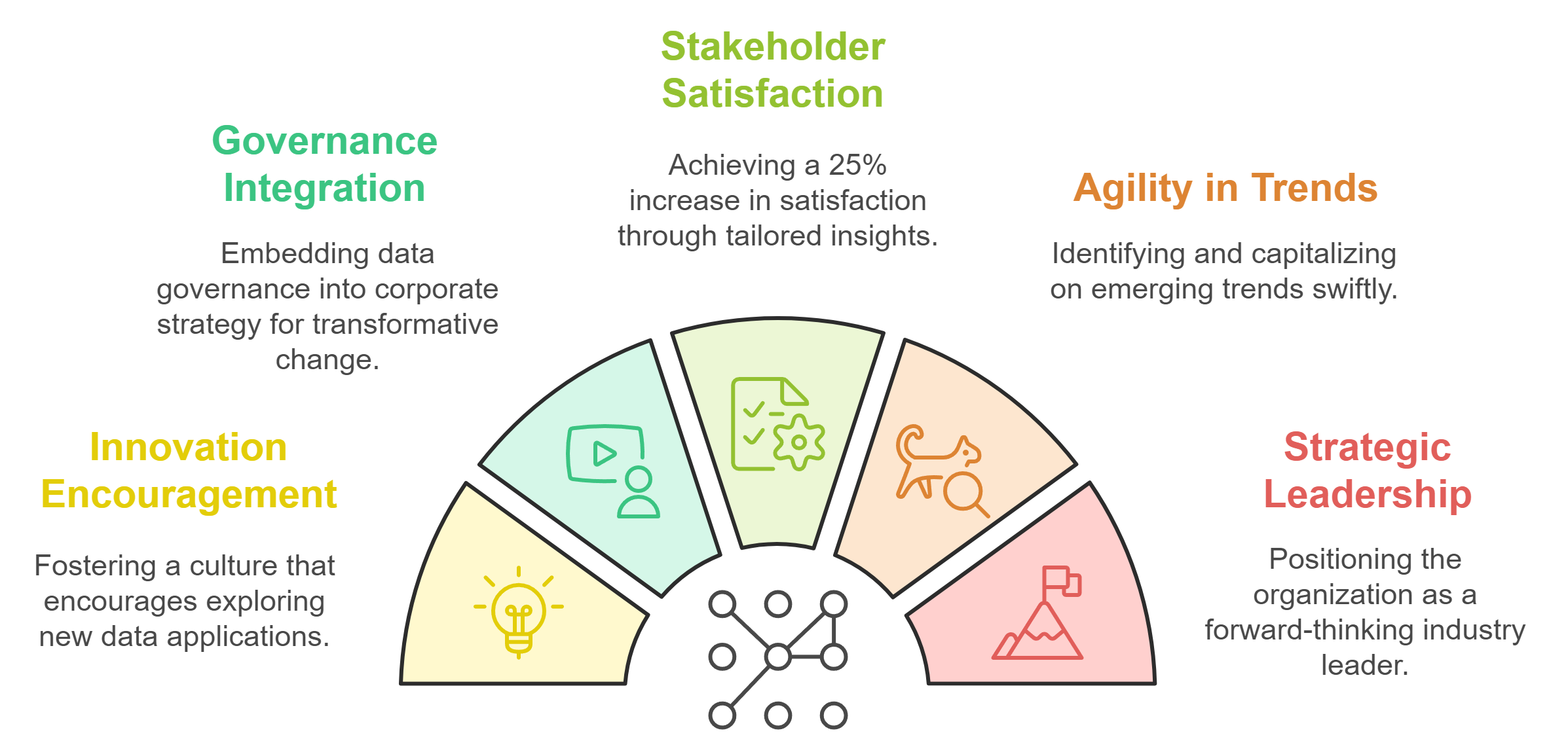
Data leadership fosters a culture of innovation by encouraging you to explore new ways of leveraging data. When you embed data governance into your corporate strategy, you unlock the potential to drive transformative change. Organizations that successfully cultivate a data-driven culture often achieve benefits that extend beyond financial returns. They gain the ability to innovate faster, adapt to market changes, and deliver superior customer experiences.
For instance, companies that embrace structured data initiatives report a 25% increase in stakeholder satisfaction. This improvement stems from the ability to tailor products, services, and strategies based on actionable insights. Additionally, data-driven organizations are better equipped to identify emerging trends and capitalize on them before competitors do. This agility provides a significant advantage in today’s fast-paced business environment.
By integrating data leadership into your governance framework, you position your organization as a forward-thinking leader in your industry. This strategic alignment not only enhances your operational efficiency but also solidifies your reputation as an innovator. In a world where only 24% of companies consider themselves truly data-driven, adopting this approach sets you apart and ensures long-term success.
Case Studies: Successful Integration of Data Leadership
Example 1: Netflix’s Journey to Data-Driven Governance
Netflix stands as a prime example of how integrating data leadership into corporate governance can revolutionize an organization. By leveraging advanced analytics and data-driven strategies, Netflix has transformed its approach to content curation and user engagement. The company uses sophisticated algorithms to analyze viewer preferences, enabling it to recommend personalized content to its users. This strategy not only enhances user satisfaction but also fosters loyalty among its subscribers.
Netflix’s success stems from its commitment to embedding data governance into its operational framework. The company ensures that its data remains accurate, secure, and accessible, which allows it to make informed decisions about content production and acquisition. For instance, Netflix uses data insights to predict the potential success of original programming, reducing risks and maximizing returns on investment. This proactive approach demonstrates how effective data leadership can align with corporate goals to drive innovation and competitive advantage.
By prioritizing data governance, Netflix has also maintained transparency and accountability in its decision-making processes. The company’s ability to balance data privacy with accessibility has strengthened its reputation as a leader in the entertainment industry. Netflix’s journey highlights the importance of integrating data leadership into governance structures to achieve strategic success.
Example 2: Microsoft’s Use of Data Leadership to Enhance Compliance
Microsoft provides another compelling case of successful data leadership integration. The tech giant has utilized data governance frameworks to ensure compliance with global regulations, such as the General Data Protection Regulation (GDPR). By embedding data leadership into its corporate governance, Microsoft has created a robust system for managing data privacy and security.
The company’s Chief Data Officers (CDOs) play a pivotal role in overseeing data governance initiatives. They ensure that data policies align with both legal requirements and organizational objectives. Microsoft’s approach includes regular audits and updates to its data governance framework, which helps identify vulnerabilities and implement corrective measures. This proactive stance minimizes risks and enhances the company’s ability to navigate complex regulatory landscapes.
Microsoft’s focus on data leadership extends beyond compliance. The company uses data insights to improve its products and services, ensuring that they meet customer needs effectively. For example, Microsoft analyzes user feedback and usage patterns to refine its software offerings, resulting in higher customer satisfaction. This dual focus on compliance and innovation underscores the strategic benefits of integrating data leadership into corporate governance.
Lessons Learned from Industry Leaders
The experiences of Netflix and Microsoft offer valuable lessons for organizations seeking to integrate data leadership into their governance frameworks:
Prioritize Data Governance: Establish clear policies and practices to ensure data accuracy, security, and accessibility. This foundation supports informed decision-making and enhances organizational efficiency.
Leverage Data Insights: Use data to drive strategic decisions, such as predicting market trends or improving customer experiences. This approach positions your organization for long-term success.
Foster Collaboration: Encourage collaboration between data leaders and other stakeholders to align data initiatives with corporate goals. This alignment ensures that data becomes a trusted asset across your organization.
Balance Privacy and Accessibility: Implement robust data governance frameworks to protect sensitive information while enabling secure data sharing. This balance strengthens stakeholder trust and supports innovation.
By adopting these practices, you can unlock the full potential of data leadership and position your organization as a leader in your industry.
Integrating data leadership into corporate governance is essential for driving your organization toward success. By embedding data leadership, you unlock strategic advantages like improved decision-making, enhanced risk management, and accelerated innovation. Strong data governance creates a foundation of trusted data, empowering you to make ethical and efficient decisions that align with your goals.
Prioritize data leadership as a core element of your governance strategy. Evaluate your current structures and identify areas for improvement. Take action today to position your organization as a leader in the data-driven era.
See Also
How Data Leadership Influences Decisions Within Organizations
Navigating Obstacles in Effective Data Leadership
Evaluating the Effectiveness of Data Leadership Programs
Key Elements of Data Governance Discussed by George Firican
Enhancing Business Success Through Effective Data Leadership
